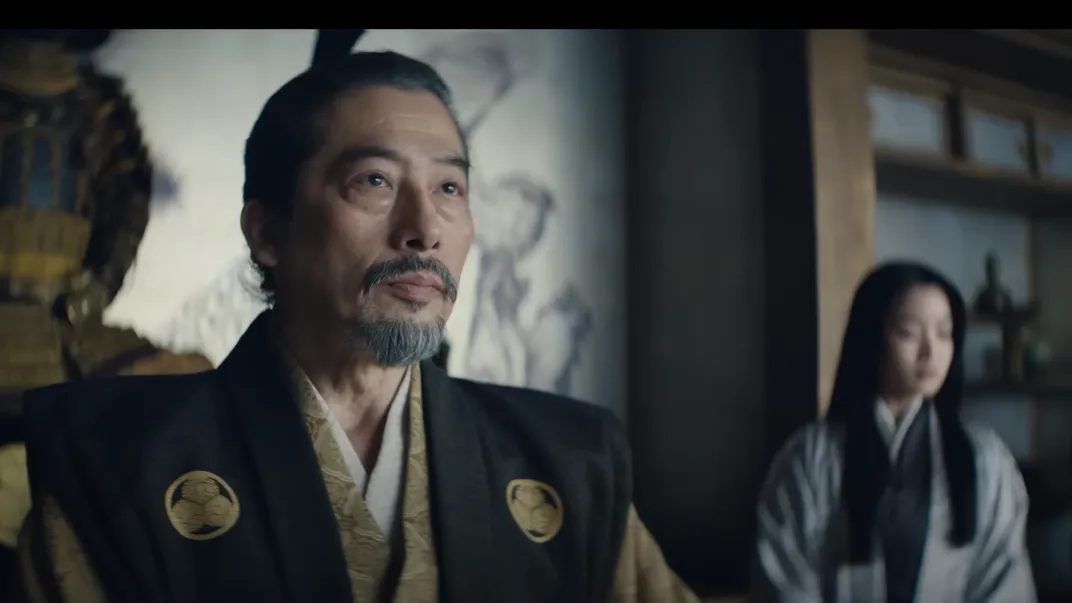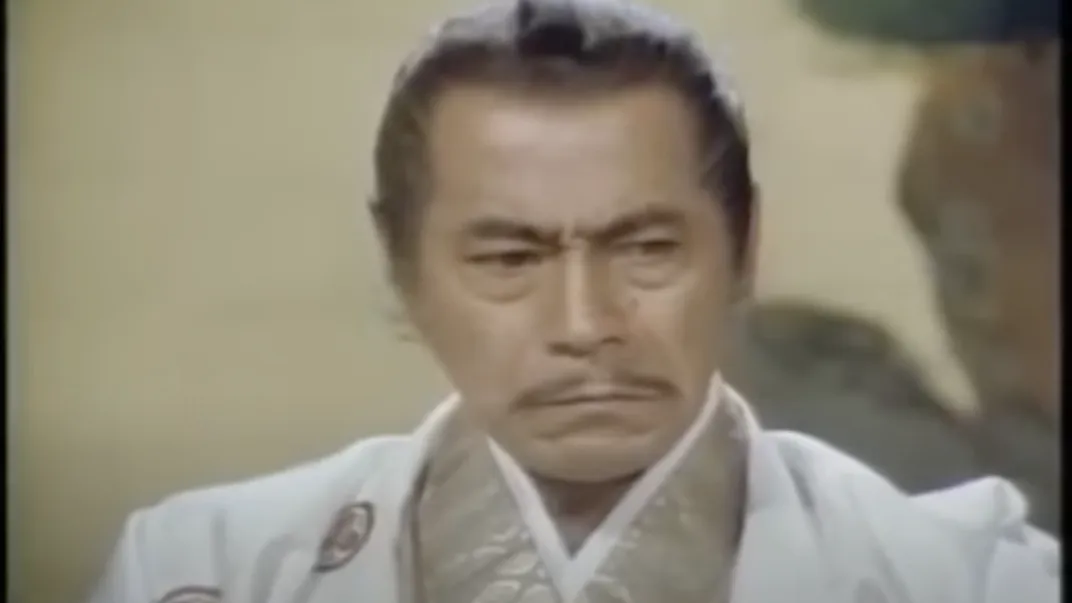When a powerful Japanese feudal lord with aspirations of seizing control of the warring nation learned that a ragged group of European sailors had landed on the archipelago’s southern shores in April 1600, he was eager to arrange a meeting with their leader. The outsiders, Tokugawa Ieyasu believed, could be of assistance in his grand plan. With the Dutch ship’s captain too ill to move, the crew sent English navigator William Adams in his place.
“Coming before [Ieyasu], he viewed me well and seemed to be wonderfully favorable,” wrote Adams in a letter to his wife. “I showed unto him the name of our country, and that our land long sought out the East Indies, and desired friendship with all kings and potentates in way of merchandise, having in our land diverse commodities which these lands had not.”
Impressed by Adams’ diplomatic overtures, Ieyasu ignored the advice of Portuguese Jesuit missionaries who urged him to execute the Protestant interloper. Instead, the warlord took Adams into his confidence. Over the next several years, as Ieyasu consolidated power under the newly established Tokugawa shogunate, he treated Adams as a trusted adviser, rewarding him with land, money and other honors.
While Adams’ relationship with Ieyasu was far from the most consequential in Japan’s history of European relations, the pair’s novelty and unlikely dynamic had a comparatively outsized cultural impact. This story of the first Englishman to visit Japan has inspired an array of dramatic works, most notably James Clavell’s 1975 best-selling novel, Shogun, and its 1980 mini-series adaptation, which became a nationwide sensation in the United States.
Forty-four years after the “Shogun” mini-series earned NBC its highest Nielsen ratings yet, a new version offers a contemporary twist on the tale. As Gina Balian, co-president of FX Entertainment, tells Variety, “When you’re taking on an adaptation of something that’s already been adapted, there has to be a reason why.” She adds, “We got more comfortable with needing to tell [the story] as much from the Japanese side, casting Japanese-speaking actors. We evolved as the project evolved.”
Here’s what you need to know about the real history behind FX’s “Shogun” ahead of the limited series’ two-episode premiere on Hulu on February 27.
The making of “Shogun”
An Australian-born British expatriate who ultimately settled in the U.S., Clavell rose to prominence as a screenwriter in the 1950s and early 1960s. His first book, King Rat (1962), fictionalized his time as a prisoner of war in a Japanese camp during World War II—an experience he would later refer to as his “Genesis.”
Clavell started looking into Adams’ life after coming across a line in one of his daughter’s textbooks: “In 1600, an Englishman went to Japan and became a samurai.” He spent two years researching the region’s history and culture before starting to write Shogun, striving for historical accuracy while also embracing the more fantastical elements of the story.
/https://tf-cmsv2-smithsonianmag-media.s3.amazonaws.com/filer_public/15/f1/15f1b7c3-5388-467f-81f6-94a54b14fdad/01-shogun-review.webp)
In Clavell’s book, Adams is reimagined as John Blackthorne, an English navigator who helps Lord Yoshii Toranaga (a stand-in for Ieyasu) assert his dominance over Japan. Toda Mariko, a Christian noblewoman loosely modeled on the real-life Hosokawa Gracia, serves as a translator for Blackthorne, striking up an unlikely romance with the sailor. (A 1980 collection of scholarly essays discussed the book’s educational merits in depth, with editor Henry Smith concluding, “By changing the names and providing many imaginary characters, Clavell has written a less strictly ‘historical’ novel than his predecessors, yet at the same time he has incorporated far more history.”)
Shogun was a smash hit, selling more than six million copies by 1980. Critics praised the immersive nature of Clavell’s world-building and his depiction of cross-cultural understanding. As the New York Times magazine reported in 1981, “Shogun readers have commonly reported becoming so engrossed in the novel that their jobs and marriages pale by comparison. At work, they hide it in desks and sneak peeks when no one is looking. On vacations, they tear the paperback into sections and pass it around so that two or three can read it simultaneously.”
Like Clavell’s book, the 1980 mini-series broke new ground for its respective medium, drawing comparisons to the blockbuster 1977 television show “Roots.” It also sparked a surge of interest in Japanese culture in the U.S., with some observers attributing the rising popularity of sushi in part to the series.
The new adaptation of “Shogun” has been in the works since 2018, undergoing shifts in focus at various stages of production. Compared with the 1980 series, which placed Blackthorne at center stage, the new show splits its screen time more equitably between the Englishman (portrayed by Cosmo Jarvis), Toranaga (Hiroyuki Sanada) and Mariko (Anna Sawai). While the earlier adaptation left Japanese-language conversations untranslated to mirror Blackthorne’s isolation in an unfamiliar country, this version features English subtitles, enabling the showrunners to explore the lives of a rich cast of Japanese-speaking characters.
Discussing the 1980 series with the New York Times, Sanada, who also serves as a producer of the FX show, says, “As a Japanese [person], I wanted to see something more real at the time, to be honest.” This time around, the team took steps to ensure greater historical fidelity and cultural sensitivity, working with consultants to confirm everything, including period-accurate “kimono color schemes and how to carry katana swords,” the Times notes. Though the producers made certain compromises (for example, not requiring actresses to paint their teeth black or shave their eyebrows as their historical counterparts did), their overall goal was to achieve a sense of “spiritual authenticity,” showrunner Justin Marks tells the Times.
The historical figures behind “Shogun”
“Shogun” opens in 1600, a pivotal year in Japanese history. At the time, the nation had been embroiled in civil war across its largest islands for almost a century and a half, with feudal lords known as daimyo competing for control of Japan. A warlord known as the first “great unifier” came close to uniting the warring states but died before he could complete this goal. His successor continued this work, uniting the country by 1590; before his death in 1598, he appointed five regents to rule in his young son’s stead. Among them were Ieyasu and Ishida Mitsunari, a daimyo whose loyalty to the heir would soon find him at odds with Ieyasu.
Adams, meanwhile, was born in England around 1564. He served as an apprentice to a shipbuilder before enlisting in the Royal Navy, where he fought against the Spanish Armada under Sir Francis Drake. Beginning in 1589, Adams spent much of his time at sea, joining the crews of ships bound for Africa, Northern Europe and Asia.
In 1598, Adams signed up for a Dutch expedition to the West Indies, leaving his wife and two children behind in England. The ship, the De Liefde, was one of five vessels recruited for the mission. The fleet left from Rotterdam that June but was plagued by storms. The De Liefde was the only ship to reach Japan, its crew of more than 100 reduced to just 24 men by sickness and a lack of supplies.
/https://tf-cmsv2-smithsonianmag-media.s3.amazonaws.com/filer_public/e3/39/e3393e90-c4db-4aec-a253-b1c8e68957ee/tokugawa_ieyasu2.jpeg)
Adams’ ship landed on the smaller island of Kyushu in April 1600, attracting the attention of locals who “offered us no hurt but stole all things they could steal,” according to the navigator’s letter to his wife. Though the Japanese initially welcomed the men, their opinion changed after Portuguese Jesuits condemned the foreigners as pirates, “incens[ing] the justices and the people against us,” Adams wrote. (These missionaries, sent by Portugal to convert the Japanese to Catholicism in the mid-16th century, were eager to stop the Protestant sailors from gaining a foothold in Japan and spreading their alternative vision of Christianity.)
Luckily for Adams and the rest of the crew, Ieyasu intervened, recognizing the opportunities presented by the men’s arrival. At the time, “a lot of people in Japan were very inward-looking,” Ian Bottomley, a curator at the Royal Armories in England, told the Independent in 2005. “But Ieyasu was a very learned man” who was keen to establish diplomatic relations with European powers. Bottomley added, “Here was this country on the far side of the world which the people of Europe had hardly heard about. It was almost mythical. But Ieyasu … was putting Japan on the diplomatic map.”
Details of Adams’ life in Japan survive mainly through six letters sent back to England. According to these missives, Adams met with Ieyasu three times in May and June 1600. During their initial encounters, the daimyo—speaking via a Portuguese translator—asked about Adams’ home country, inquiring whether England was at war with any other nations (only Portugal and Spain, the navigator replied) and “what moved us to come to his land, being so far off.” He also expressed interest in the De Liefde’s cargo, which included 5,000 cannonballs, 500 matchlocks and 5,000 pounds of gunpowder.
/https://tf-cmsv2-smithsonianmag-media.s3.amazonaws.com/filer_public/94/2a/942aee10-dce1-4f7d-9ecd-0c6a4d94d6a8/map-of-japan-1707-william-adams-visits-shogun.png)
After meeting with Adams, Ieyasu denied the Jesuits’ calls for the crew’s execution and sent the De Liefde on to Edo (now Tokyo), where the battered ship sank. The daimyo likely confiscated the vessel’s munitions for use in his ongoing quest to gain control of Japan, which culminated in a clash with Mitsunari and other feudal lords allied with the heir at the October 1600 Battle of Sekigahara. Ieyasu’s victory—cemented by his appointment as shogun in 1603—ushered in the Tokugawa shogunate, an era of prosperity that endured for more than two and a half centuries.
As Japan’s leader, Ieyasu took steps to curb the daimyo’s influence and prevent rival feudal lords from threatening his reign. He died in 1616, “having accomplished what a century of warriors had attempted and failed: He brought enduring preeminence to his own family and a lasting peace to Japan,” per Encyclopedia Britannica.
Following Adams’ arrival in Edo in the summer of 1600, “our detailed knowledge of [him] becomes progressively sparser, and the opportunity for romancers to embroider becomes correspondingly greater,” wrote Smith in the 1980 essay collection. “Adams’ narrative … abruptly switches to a time frame of years rather than weeks.” (Arguably the most ahistorical storyline in Clavell’s book is the romance between Blackthorne and Mariko, whose real-life counterpart, Gracia, never even met Adams. The book’s portrayal of Mariko’s loyalty to Toranaga is more accurate; shortly before the Battle of Sekigahara, Gracia refused to surrender when Mitsunari tried to take her hostage, instead asking her chamberlain to kill her before committing seppuku, or ritual suicide, himself.)
/https://tf-cmsv2-smithsonianmag-media.s3.amazonaws.com/filer_public/56/49/5649dcb7-f842-430f-8186-ef34c42e1a36/sekigaharascreen.jpeg)
Based on the scant information available, scholars generally agree that Ieyasu showed favor to Adams, granting him a valuable countryside estate and consulting with him on maritime trade policy. “Ieyasu really liked him for his knowledge as a navigator,” Frederik Cryns, author of a forthcoming biography of Adams, tells the Telegraph. “Ieyasu probably didn’t know that England and Holland existed … so he got a whole new worldview through Adams.”
Dubbed Miura Anjin (“Anjin,” meaning “pilot,” is a nickname shared by Blackthorne in “Shogun”), Adams helped construct Japan’s first Western-style ships and played a key role in establishing an English trading post in the country. Barred from returning to England by Ieyasu, Adams carved out a prosperous life for himself, even marrying a Japanese woman and starting a new family. Upon his death in 1620, Richard Cocks, head of the English trading post, wrote, “I cannot but be sorrowful for the loss of such a man as … Adams, he having been in such favor with two emperors of Japan as never any Christian in these part[s] of the world.”
/https://tf-cmsv2-smithsonianmag-media.s3.amazonaws.com/filer_public/ec/04/ec04504c-e4e9-4c7d-99ca-82c23d937401/william-adams-with-daimyo-and-attendants.png)
:focal(700x527:701x528)/https://tf-cmsv2-smithsonianmag-media.s3.amazonaws.com/filer_public/90/5e/905ea6f0-aeda-48fb-8c42-3fc0eab8deb8/shogun.jpg)
/https://tf-cmsv2-smithsonianmag-media.s3.amazonaws.com/accounts/headshot/mellon.png)




/https://tf-cmsv2-smithsonianmag-media.s3.amazonaws.com/accounts/headshot/mellon.png)